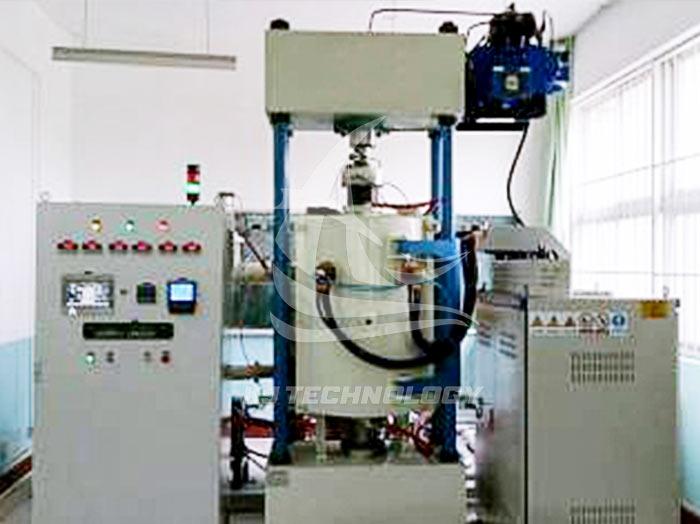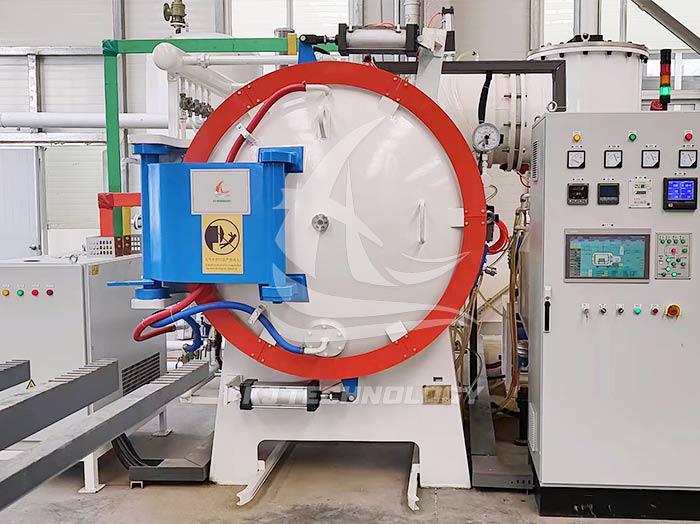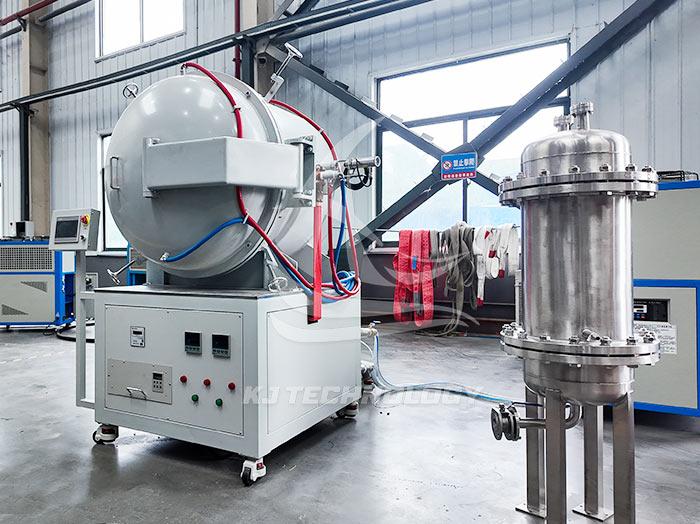Daily maintenance of laboratory vacuum heat treatment furnace
 05-21-2025 Author: KJ technology
05-21-2025 Author: KJ technology
The daily maintenance of laboratory vacuum heat treatment furnaces is the key to ensuring their normal operation and extending their service life. Here are some suggestions for daily maintenance:
1. External cleaning of furnace body: After using the vacuum heat treatment furnace every day, wipe the outside of the furnace body with a clean cloth to remove impurities such as dust and oil on the surface. For the sealing area of the furnace door, it is necessary to clean it carefully to prevent impurities from affecting the sealing effect.
2. Observation window cleaning: Regularly clean the observation window on the furnace body to ensure clear observation of the situation inside the furnace. If there are stains on the observation window glass, a specialized glass cleaner can be used for cleaning.
3. Vacuum pump inspection:
Oil level check: Check the oil level of the vacuum pump daily to ensure that it is within the normal range. If the oil level is too low, it is necessary to add vacuum pump specific oil in a timely manner. It is generally appropriate to check the oil level once a week.
Oil quality replacement: Regularly replace the vacuum pump oil, according to the frequency of use, every 3-6 months. When changing the oil, the old oil should be completely drained first, and then new oil should be added to the specified level. At the same time, during the oil change process, it is necessary to check the internal structure of the vacuum pump, such as the pump body, blades, etc., for wear or damage.
Operation status check: Check the operation sound and temperature of the vacuum pump every day. Under normal circumstances, the vacuum pump operates smoothly and the temperature is not too high (generally not exceeding 70-80 ° C). If abnormal sound or high temperature is found, the pump should be stopped for inspection in a timely manner, which may be caused by foreign objects or component wear inside the pump.
4. Heating element inspection: Check the heating element every 3-6 months. For graphite heating elements, it is necessary to check for any signs of fracture, wear, or surface oxidation. If damage is found to the heating element, it should be replaced in a timely manner to avoid affecting the heating effect. At the same time, check whether the connection parts of the heating element are firm. If loose connections are found, tighten the connection screws again to ensure good electrical connection.
5. Internal inspection of furnace body: Conduct a comprehensive inspection of the furnace body every 6-12 months. Check whether the insulation material on the furnace wall is damaged or detached. If the insulation material is damaged, it should be repaired or replaced in a timely manner to ensure the insulation performance of the furnace body. Check if the temperature measuring components such as thermocouples and thermal resistors inside the furnace are working properly. Its accuracy can be determined by measuring its resistance value or comparing it with the standard temperature for testing. If it is not accurate, it should be calibrated or replaced in a timely manner. Check whether the airflow distribution devices (such as deflectors, etc.) inside the furnace are deformed or damaged, to ensure that the airflow inside the furnace is uniform, and to ensure that the heat treatment effect is uniform and consistent.
6. Vacuum pipeline sealing inspection: Regularly check the sealing of the vacuum pipeline. Vacuum leak detectors can be used to detect pipeline interfaces, valves, and other parts. If leakage points are found, they should be repaired in a timely manner. Generally, a comprehensive vacuum leak test is conducted every 6-12 months.
7. Vacuum valve maintenance: Maintain the vacuum valve, clean the dirt inside the valve, and check whether the sealing components of the valve are worn. If the seal is severely worn, it should be replaced to ensure the sealing and normal opening and closing function of the valve.
8. Electrical connection inspection: Regularly check the power cord and connection joints to ensure good electrical connection and prevent faults caused by poor contact.
9 Water cooling system inspection: For vacuum heat treatment furnaces equipped with water cooling systems, regularly check the water quality to prevent scaling and mold, and clean or replace the coolant.
10. Recording and maintenance logs: Operators should record the usage of the equipment daily, including parameters such as temperature, vacuum degree, and operating time. Establish maintenance logs to record the content of each maintenance and any issues discovered, in order to track the operational status of the equipment.








